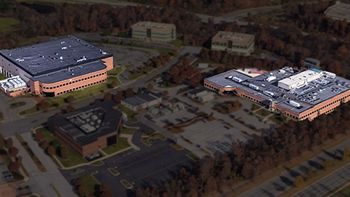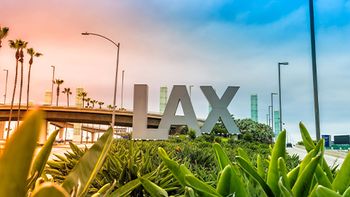
- Pharmaceutical Commerce - May/June 2012
A scientific approach to site selection
Applying a consistent framework to choose locations can help optimize R&D and drive cost reduction for pharmaceutical companies of all sizes
The global drug and pharmaceutical market continues to grow, but not all geographic locations deliver equal value. Incremental revenue from mature markets continues to decline, while emerging markets continue to grow. This trend is creating a change in how companies think about the deployment and location of facilities, including those that support the unique needs of functional groups, such as research, development, clinical trials, manufacturing and distribution operations.
The process of selecting locations has evolved into a sophisticated discipline. More senior executives now recognize that location choices have a significant impact on operational performance, particularly when combined with improved corporate governance in the decision-making process. Consistent analytics that allow governance to be applied to the research process fall into a two-step investigative framework that includes (1) a Rigorous Phased Quantitative Analysis and (2) a Multi-Dimensional Quantitative Trade-Off Analysis.
Step One: Rigorous Phased Quantitative Analysis
This is a four-step process that utilizes increasingly detailed levels of data:
a. Frame — The multidisciplinary development of project specifications, decision criteria, fatal flaws and prioritization of location objectives
b. Phase Two: Assess — Quantitative assessment of location choices utilizing desktop research, survey instruments, and interviews framed on the criteria developed above
c. Phase Three: Validate — Application of primary research and validation of data to confirm the merits of a location and identify issues that require resolution
d. Negotiate — Active negotiation of business terms and conditions associated with the structuring of a direct investment project.
Step Two: Multi-Dimensional Trade-Off Analysis
This second component of the framework for location option evaluation considers financial, non-financial and risk considerations independently and in combination, as follows:
a. Financial — Quantitative analysis, including commonly accepted measures of financial performance such as net present value, free cash flow, and return on invested capital
b. Non-financial — Analysis of the prevailing business climate including labor, infrastructure, regulatory, legal, supply chain, site and timing considerations
c. Risk — Analysis of risk considering intellectual property, political, economic, financial, disaster, human, timing and other operational considerations.
While effective in the evaluation of location options, both approaches require adaptation to identify requirements for different functions. Following is an exploration of key site-selection considerations for research, development, clinical trials, manufacturing and distribution operations.
Research
The success of the broader enterprise is fundamentally connected to the success in discovering and commercializing new medicines, regardless of company size, placing a particular emphasis on the importance of choosing the right research location. But the “right” location is likely to be different for established vs. start-up operations.
For example, smaller companies commonly place a high level of importance on the opportunity to access venture capital dollars, and on low occupancy- and overhead-cost locations typically made available by a university or public-private partnership. In contrast, larger companies enjoy greater access to capital, but their higher cost of failure drives location decisions focused on access to talent capable of discovering and adapting compounds and molecules with specific medical application or blockbuster potential. A favorable regulatory environment and strong intellectual property protection are also important considerations to large operations, which helps to explain why high-cost locations, such as the San Francisco Bay Area; Boston; Cambridge, England; Basel, Switzerland; and Munich, Germany continue to see investment despite competition from lower-cost jurisdictions.
Research location site-selection key considerations include:
Development
Determining where to invest in drug development and where to scale up production requires an assessment of time, cost and risk associated with transferring a study subject (e.g., a molecule) from the research bench to a new facility, and in turn, transferring the new scaled-up manufacturing process into commercial production. The pool of scientists with the highly technical skills needed to support drug development processes numbers less than 10,000 globally, according to some industry watchers, so location decisions are highly sensitive to proximity to scientists with development expertise.
Development location site-selection key considerations include:
Clinical trials
Concern that new basic science discoveries are not quickly yielding more effective, more affordable and safe medical products is leading companies to raise performance expectations during clinical trials. A compound entering Phase I testing often represents more than 10 years of preclinical evaluation, and offers a nominal 8% chance of reaching market. For this reason, companies are increasing focus on rapidly demonstrating the safety and effectiveness of new products, and at lower costs. This trend has seen an increasing level of attention on locations such as India that are rich in science and mathematical talent and offer low structural operating costs.
Clinical trial location site-selection key considerations include:
Manufacturing
In addition to an extensive set of location criteria, each product revenue model (including patent status and profit margin) influences manufacturing location options. Companies manufacturing a patented product will typically seek tax-advantaged locations known for strong intellectual property protection, such as Ireland, Singapore or Switzerland. This combination of factors has typically allowed companies to reduce corporate income tax to very low rates utilizing a low statutory rate or income-tax-based incentives tied to direct investment and an interest in fostering the technologies in question. Off-patent products or generics characterized by low gross margins typically result in location strategies designed to reduce overall production costs, and are often focused on India, China, and, increasingly, Eastern Europe.
Manufacturing location site-selection key considerations include:
A few of these site-selection factors should be considered in more detail:
Talent — Due to increasing levels of manufacturing investment across the world, many markets face a shortage of qualified engineers, or will in the years to come.
Sites — There is a shortage of sites in emerging markets, due to regulatory issues concerning ownership, agricultural-to-industrial land transfer, poor physical infrastructure and other considerations. Many governments are struggling to respond quickly to the demand for infrastructure.
Utilities — Water, natural gas and electrical shortages are common in many emerging markets that are otherwise attractive for manufacturing. While there is an abundance of data available, it is not always applicable to all regions, and specifically may underestimate the reliability of utilities within designated industrial zones featuring strong utility-supplier agreements.
Regulatory environment — Site selection is affected by regulations covering tax on the importation of raw materials or equipment; international regulatory agency participation; foreign land ownership; protection of domestic industries; and general permitting. Recently, regulations requiring market presence in exchange for market access have become more frequent – examples include Indonesia and Brazil.
Incentives — Foreign direct investment in manufacturing locations often represents a large capital investment, new sources of employment and new tax revenue. To encourage these positive impacts, many times governments offer significant long- and short-term financial incentives designed to attract new facilities. Inducements can include government grants to cover land, construction costs and infrastructure costs as well as tax deferrals.
Regulatory compliance — At least in part due to this industry’s strong regulatory demands, all pharmaceutical manufacturing locations must have the ability to demonstrate the presence of, or the ability to train employees familiar with, Good Manufacturing Practices (cGMP). In many cases, the development of a cluster is driven and perpetuated by the presence of training facilities and programs able to guarantee a consistent supply of such skills.
Distribution
The location of distribution facilities is driven by the need to optimize product shipment logistics. For example, products requiring maintenance at a certain temperature rely on access to robust cold supply-chain capabilities. This, combined with the preference for late pickup times for overnight delivery, drives companies to select sites proximate-to-package freight hubs for those products. A location with favorable inventory taxes is also critical, particularly for high-value products like biologics or implantable devices.
Distribution location site-selection key considerations include:
Bring it all together
As we have discussed, the location selection process varies significantly by value chain component and product profile. Layer in company-specific nuances and preferences, the typical size of investment required in the pharmaceuticals industry, and risk of failure, and the process can become a complex, challenging, high-stakes endeavor. Experience has shown that a strong and consistent decision-making framework will positively impact the value any company can derive from its location decision-making, particularly when the process is fully transparent and executed by a multidisciplinary team.
About the authors
Matt Jackson [top] (+1 571.215.5118, [email protected]), Matt Highfield [middle] (+1 612.308.5765 or [email protected]) and Shannon Curley (+1 571.232.1575 or [email protected]) are part of the leadership team in the Business Consulting Group at Jones Lang LaSalle. They help companies tackle global location footprint challenges in Life Sciences and other industries and have worked in more than 40 countries.
Articles in this issue
over 13 years ago
Navigating the tense, complex oncology marketover 13 years ago
2012 site selection reportover 13 years ago
Supply chains for a patient-centric worldover 13 years ago
FTC Approves Express Scripts/Medco Merger: Excerptsover 13 years ago
Jobs and biopharmaover 13 years ago
Some good news on drug shortage--finallyover 13 years ago
Compliance, technology energize the master-data management businessNewsletter
Stay ahead in the life sciences industry with Pharmaceutical Commerce, the latest news, trends, and strategies in drug distribution, commercialization, and market access.




